- Home
- Steven Becker
Backwater Flats Page 5
Backwater Flats Read online
Page 5
She was right. But then I remembered seeing the metal ones aboard the FWC boat. Those could.
7
“What if it was made from metal?”
She picked up the gauge and ran her fingers along the edges. An inch wide, the gauge was about five inches long with a three-inch notch for measuring the carapace of the lobster. The outside edges of the gauge were slightly rounded, but the inside notch had sharp edges with ninety-degree corners. Justine grabbed the gauge by the end and started thrusting it in a stabbing motion.
“It would’ve had to catch the skin on the inside edge. I don’t see how it’s possible.” She handed the gauge back to me.
Justine had thrust with an in-out stabbing motion. “You’re striking out like a girl.” I knew that comment was a mistake, but she took no offense—for now.
“Holding a knife with the blade facing down, you’re more likely to cut yourself than your opponent.” I turned the gauge over, and with an underhand motion slashed up.
“That’ll do it. Especially with the added cargo he was carrying.”
The visual wasn’t pretty, but Hayward had been close to fifty pounds overweight. If it had caught on the underside of his paunch, the sharp, inside edge of the gauge could have easily pierced his skin. The ragged wound Hayward had died from might very well have been made by the gauge.
“I think we have it. Thank you.”
We both stared at the gauge. “We should send a picture to Sid and see if he agrees,” Justine said.
I picked up my phone and snapped a picture, which I messaged Sid. “Now for the big question. Why would you kill someone with a lobster gauge?”
“It was handy?”
That meant the crime might have been more of an emotional response to provocation rather than a premeditated murder. The distinction fell along the lines of preparation: You don’t bring a knife to a gun fight, or a lobster gauge to a cold-blooded murder.
As Justine and I sat on the gunwale, wrapped up in our thoughts, my phone dinged. Reaching into my pocket, I fished it out, hoping it was Sid.
“What is this, a work date?” Martinez’s voice blasted across the bay. “How cute.”
Instinctively, I looked up at the camera mounted just below the security light. The dock was technically a public access point for the day-use area, so in his mind he had a right to snoop. I felt differently. Before I could respond that we were working, he started again.
“And why are you messing around in the internal workings of the FWC?”
“The internal workings? I’m just asking a few questions.”
“Tread lightly, my friend. You of all people know about interagency squabbles.”
I had to assume he was talking about my relationship with Miami-Dade. With the exception of Grace Herrera, I was pretty much persona non grata with the police department. Before I could explain that we had discovered the likely murder weapon, he cut me off.
“Susan will be your liaison with the FWC. Let her do the talking.” He disconnected.
I’d already made the mistake of asking for her help. There was no way this investigation’s communication was going through Susan McLeash. I remembered “ordering” her to meet me this morning, but wasn’t concerned, as she had probably forgotten about it with her next drink.
Justine had a questioning look on her face. “Martinez?”
I nodded.
“Crap.”
She was more than familiar with my publicity-seeking boss and his annoying sidekick. At first, she’d thought I was overreacting, but over time she had observed what I had to deal with.
“He wants Susan to be the liaison with the FWC.”
“So, use her.”
I thought her statement was a reprimand for being obstinate about accepting help, but after thinking about it for a minute, I realized if Susan asked the hard questions, she would take the brunt of their anger. “Like, shoot the messenger.”
She winked. “Smarter than you look.”
“Martinez already thinks we’re taking a day off. We shouldn’t disappoint him.”
“I’m in for that. What do you want to do?”
“I’ve got lobster on my mind. Wanna see if we can rustle some up for dinner?”
“Sounds good. Let’s grab the gear and hit the reef.”
We took two tanks and a hookah rig that Ray had recently fashioned. It allowed a twenty-five-foot hose to be attached to a tank, which floated on the surface. With our other gear, the front deck of the boat was crowded, but we’d done this plenty of times. Grabbing two spinning rods—just in case—we packed a cooler and headed northeast, following along the inside of Elliot Key.
With our discovery of the possible murder weapon, this trip could be justified as work. The only problem was, we would have to leave the bay to hunt, as lobster were protected in the Biscayne Bay/Card Sound Lobster Sanctuary, which encompassed the inside waters of the park. Most of my time was spent inside the boundary islands, leaving the outside to the FWC and ICE. Martinez had trackers aboard the boats and would know where we had gone. When he asked for an explanation, I needed to have one ready.
“Where’re we headed?” Justine asked.
She had expected us to go out Caesar Creek. Just outside the pass we would be in the vicinity of some nice coral heads that I knew often held lobster, but on a quiet Monday I wanted to do some exploring and check out one of the less-traveled routes to the ocean.
“I was thinking about heading out the pass between Elliot and Sands Keys. There’s some coral heads not too far offshore.”
The boat was powered by an older hundred-fifty horsepower outboard. The newer models were much quieter, but this motor was still serviceable and wouldn’t be replaced until it failed. Between the wind created by the twenty knots we were traveling, the sound of the water against the hull, and the engine itself, it was hard to talk. Glancing over at Justine, I could see she was enjoying the ride as much as I was. There’s something about running wide open over calm seas on a warm sunny day with a beautiful woman beside you that takes away whatever pains a man.
I slowed for the pass and slipped easily between the two markers outlining the deep-water channel. Once we were clear, Justine climbed up the T-top for a better view of the bottom. At midday from ten feet above the water the definition is striking. Top-to-bottom visibility lasted until we were just past twenty-five feet of water. She pointed out a promising coral grouping ahead. Slowing to follow her directions, I circled the spot and she tossed a buoy with a nylon line and four-pound weight attached to mark the location. In order to get the stern of the boat over the area, I set the engine in neutral and watched the drift as it moved us to the southwest. On the reciprocal heading, I passed over the buoy and traveled about a hundred feet beyond, where we dropped anchor. A quick nudge into reverse set the hook, and Justine paid out the rode as we drifted back toward the buoy. Once we were a few feet from it, she secured the line.
Standing in the bow, I could clearly see the large, round coral heads rising from the bottom. Out west, after the runoff from the snow melt (when the water was a turgid mess) was over, the streams were equally clear, but they were only several feet deep; here, the depth finder showed us in twenty-three feet. Had I not known that, just looking down through the water, I would have expected to be able to reach over the gunwale and touch the bottom.
Justine had been playing around with freediving and donned a pair of extra-long fins that would propel her to the bottom with minimal effort and oxygen use. She sprayed our homemade defogger, a mixture of baby shampoo and water, into her mask, rinsed it out, and placed it over her head. While I was attaching the first stage of the hookah rig to the tank, she slid into the water.
I stopped to watch her, knowing how dangerous freediving actually is. Advanced divers can hold their breath for several minutes. Justine and I had challenged one another, with my dropping out at just over a minute; she lasted close to two and I think she could have gone longer. Despite her prowess, she told me her contractions ge
nerally start toward the middle of the second minute. Though not dangerous in themselves, they are a warning sign and if ignored for too long there is a real danger of shallow-water blackout.
We exchanged glances before she tilted her head down and, with one leg straight and the other bent, she slipped under the surface. Once submerged, with two graceful kicks, she leveled off, hovering just over the bottom. With one eye on her, I tossed the tank, which was surrounded by a foam sleeve, into the water. After feeding out the air hose, I donned my own gear and, with a tickle stick, net, and bag in hand, dropped over the side.
We passed each other, me going down and her coming up. After exchanging okay signs we continued on our paths. I’d learned from prior excursions to add extra weight to my belt if we were hunting lobsters. It was important to be able to rest on the bottom while you enticed the crustaceans from their holes. Gently, so as not to disturb the sand, I dropped to the bottom and, using my hands, walked my way to the first coral head. The area we were on was comprised of singular, hump-shaped pieces of coral, set several feet apart with patches of sand in between. Most were hollow—perfect hiding spots for fish, moray eels, and lobster.
Several lion fish were in the first head I checked. On my next trip to the surface I would grab the small Hawaiian sling, a simple sling-shot type device suitable for spearing the slow-swimming fish. As easy as they are to harvest, the invasive species is out of control on many of the South Florida reefs. With their razor-sharp, venomous spines, they have no natural predators. They reproduce with wild abandon and have decimated several native fish populations, including grouper. Tournaments and challenges were springing up all over to collect them, and over the last year I thought I had noticed a small decline in their population.
Justine was back and together we scoped out the next coral structure. This one was larger and, from several feet away, I could see a half-dozen antenna probing the waters outside of the shelter. We looked at each other and I handed her the stick and net. Easing herself up to the opening, I watched as she extended the tickle stick into the hole. From my vantage point I couldn’t see what she was doing, but knew from the flick of her wrist and the position she held the net that she had the stick behind one of the bugs. Prodded from behind, it slowly walked out of the hole. I could just about see the head when Justine positioned the net and, with a swoop of the stick, forced the lobster from its cover and into the net.
The battle is not over until the bug’s in the bag and Justine wasted no time dropping the stick and grabbing the carapace through the outside of the net. Once she had a firm hold, she started to shake it back and forth, disorienting it. The movement dislodged the small grain of sand in its brain that told the crawfish if it was right-side up or upside down. It stopped fighting and started to relax—at least for a second. I moved into position and opened the mesh bag. With one hand on either side of the net, Justine worked the critter free of the net’s webbing. With a death grip on the lobster she positioned it tail first, stuck her hand inside my bag and released it. Lobster walk forward, but swim backwards, and I soon felt a thud as it hit the back of the bag. Before the bug could recover I closed the bag.
Without a regulator, I could see the smile on Justine’s face when she looked at me. Taking a deep breath from my regulator, I removed it from my mouth and handed it to her. Rather than surface for air, she gratefully accepted it. Once she had recovered, we changed roles and I netted the next lobster. Warned by the rasping sound its netted compatriots made by scraping their antenna across their carapace, the third lobster bolted from the cover of the coral head and disappeared.
We smiled at each other and moved to the next structure. Not having the burden of pulling the hose and tank behind her, Justine reached the opening first, but quickly backpedaled. I could see the shock in her eyes as she moved away.
8
Justine quickly recovered and made a swooping motion with her hand, the sign for an eel. Morays like the same cover as lobster and are generally benign, except for the larger ones. As this one moved out of the hole, hopeful for a meal, we could see six feet of eel already and still no tail. We both swam to the side, knowing the eels preferred to hunt near their homes. With a dose more caution this time, Justine approached the next hole.
We proceeded like this for maybe forty minutes—until I felt a restriction in the air line. Surfacing, I could feel the weight of the seven or eight lobsters we’d caught in the bag. We ended up about a hundred yards from the boat, and I was glad there was little current as I kicked back. Hauling the bag out of the water, I tossed it on the deck and climbed aboard. Reaching behind me, I took Justine’s fins from her and offered a hand, which she declined.
“Nice job. I counted eight, what do we have?”
After quickly stowing the gear, I dumped the bag out on the deck. “Eight it is.”
“You know what? We never measured them.”
Whether this had any relevance to the case, I didn’t know, but it did make me think. “I don’t think we’ve ever measured underwater. You kind of get a sense if they’re too small and let those go. As hard as it is to get the buggers into the bag, holding them to measure would risk losing them.”
“The point is, we didn’t.”
Taking the gauge, I slipped it over the hard head of each lobster. Hooking the leading edge onto the hard spot between the eyes, I placed the other end on the base of the body. Only one was close, while the others were clearly large enough. “Guess we got lucky.” I placed the lobsters in the live well and flipped the switch to power it up.
“Want to go for a limit?” In these waters the daily allotment was six per diver per day.
“Nah. That was awesome, though.”
I hoped we might be in agreement on the day’s next activity and finished putting away the gear. We hung out on the water a while longer, drinking from our water bottles and enjoying the sun.
“I wouldn’t have a second thought about tossing one back if it was short.” Even though we hadn’t measured them in the water, they were still alive when we did.
“Even if it was the only one you caught?” Hitting the limit was not the norm for these waters.
She was right about that. Many days we were lucky to do two dives and bring back one or two lobster. “I think so.”
Justine’s mind had returned to work mode.
“There were quite a few pleopods in that bag you collected from the boat’s cooler. I’m assuming that was just a small percentage that probably fell off on their own.”
I thought about what we had just discovered. Penalties for taking shorts were big. First offenders were fined between one- and five-hundred dollars with an added option for up to sixty days in jail. For subsequent offenses the fines tripled and incarceration was likely. Hardly worth it for something you could buy for twenty bucks at a seafood shop.
Justine’s comment had me thinking about biology and I pulled one of the lobsters from the live well. The first thing I noticed was each of the ten small appendages, called swimmerets, were still intact. “How many would you guess would fall off naturally?”
“Suppose it would depend on how they were handled. We can put some on ice when we get back and see how hard they are to remove.”
I wished I had taken a count, but I did have a picture of the cooler of the FWC boat on my phone. Anxious to find the answer, I started the engine and went forward to pull the anchor. Justine stepped behind the wheel and, following my hand signals, moved us over the anchor as I took in the slack. Once we were directly above it, she cut the power and I pulled it aboard. We were all smiles as we headed back to Adams Key.
In the name of science we left two lobsters aside and cleaned the rest. The remaining pair were placed on ice in the cooler of my center console in an attempt to recreate the conditions I had observed aboard the FWC boat. I put three in the refrigerator for dinner and placed the other three in a Ziploc bag with a small amount of the water from the live well, which went into the freezer. I had learned si
nce coming to Florida that the bad reputation of frozen fish was a misnomer. Properly frozen fish are excellent, but that means freezing them immediately after cleaning and ensconcing them in a seawater or saltwater slurry to ward off freezer burn.
With several hours to spend before our experiment needed to be checked on, I grabbed Justine and led her back to the bedroom.
I could tell by the shadow across the window that I had fallen asleep, and lazily dragged my arm across the other side of the bed, only to find it empty. Getting up, I dressed and, not seeing Justine in the house, went outside. The deck was deserted and only the three center consoles were at the dock. I silently thanked Ray for his quiet return and headed downstairs. As I expected, one of the paddleboards was missing.
Scanning the water, I saw no sign of Justine, but that was to be expected. She could move the board at a steady five miles per hour and was likely back in the lagoon. I glanced over at the cooler holding the lobster on my boat, but decided to wait until Justine was with me to unveil the result of our experiment. Thinking I’d get a start on dinner, I had just turned toward the house when I heard the screen door of Ray’s house open and Zero’s toenails scratch the weathered wood as he plodded down the steps.
He reached the bottom, eyed me, and, scanning the dock and grounds, sniffed the air.
“Just me, buddy,” I called to him.
Slowly he waddled over, not showing nearly the excitement he did when Justine or Allie was here. Thinking about Allie, I rose and sent her a quick “what’s up” text. I slid the phone back in my pocket and turned toward the dock as I heard footsteps behind me.
“Y’all get out today?” Ray asked.
I had to think for a few seconds before I realized that he had seen our personal center console docked and guessed that Justine was here. “Yup, got some lobsters off those coral heads behind Sands Key.”
“Good spot. Not too picked over, either.”

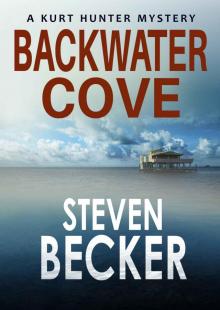 Backwater Cove
Backwater Cove Storm Surge: A Fast Paced International Adventure Thriller (Storm Thriller Series Book 3)
Storm Surge: A Fast Paced International Adventure Thriller (Storm Thriller Series Book 3)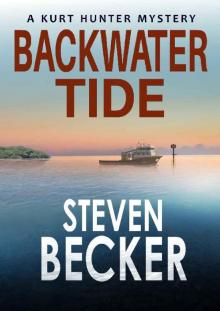 Backwater Tide
Backwater Tide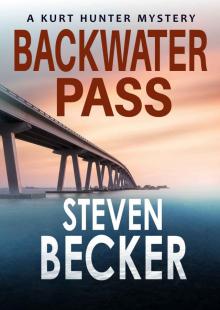 Backwater Pass
Backwater Pass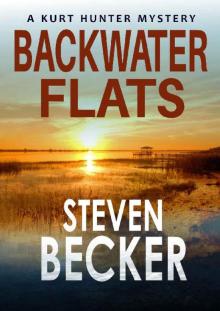 Backwater Flats
Backwater Flats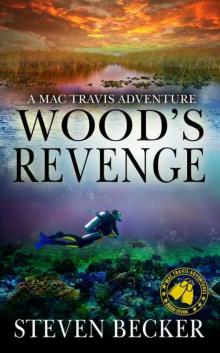 Wood's Revenge
Wood's Revenge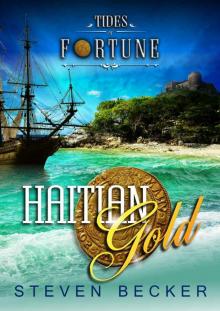 Haitian Gold
Haitian Gold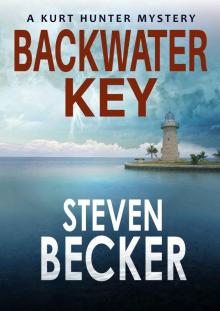 Backwater Key
Backwater Key Wood's Tempest
Wood's Tempest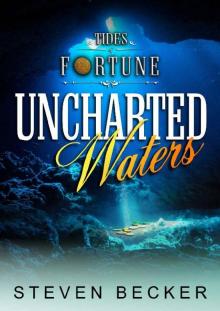 Uncharted Waters
Uncharted Waters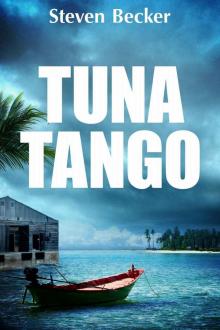 Tuna Tango
Tuna Tango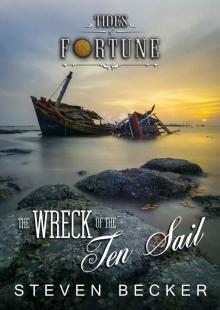 The Wreck of the Ten Sail
The Wreck of the Ten Sail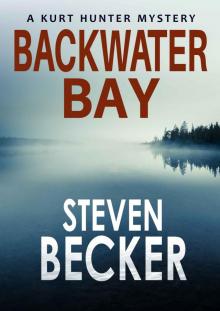 Backwater Bay (Kurt Hunter Mysteries Book 1)
Backwater Bay (Kurt Hunter Mysteries Book 1) Storm Clouds
Storm Clouds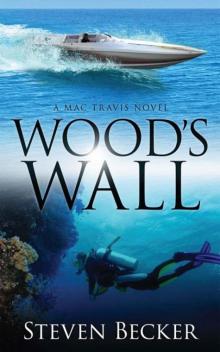 Wood's Wall
Wood's Wall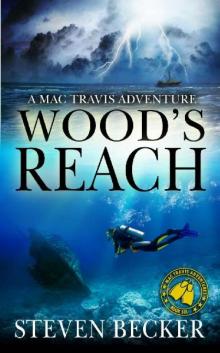 Wood's Reach
Wood's Reach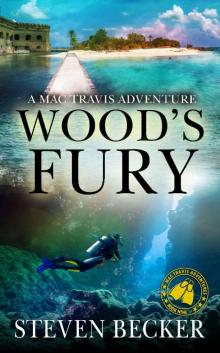 Wood's Fury
Wood's Fury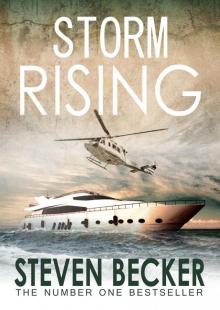 Storm Rising
Storm Rising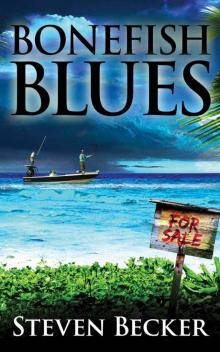 Bonefish Blues
Bonefish Blues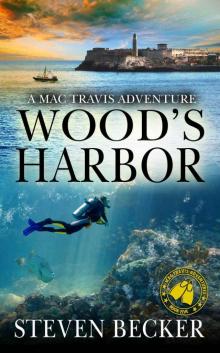 Wood's Harbor: Action & Sea Adventure in the Florida Keys (Mac Travis Adventures Book 5)
Wood's Harbor: Action & Sea Adventure in the Florida Keys (Mac Travis Adventures Book 5)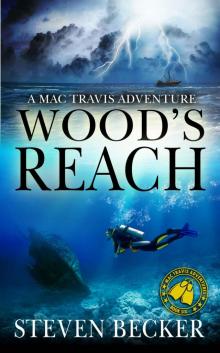 Wood's Reach: Action & Sea Adventure in the Florida Keys (Mac Travis Adventures Book 6)
Wood's Reach: Action & Sea Adventure in the Florida Keys (Mac Travis Adventures Book 6)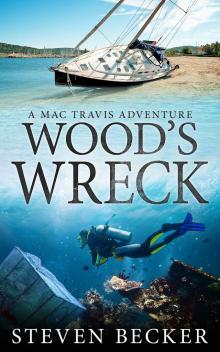 Wood's Wreck
Wood's Wreck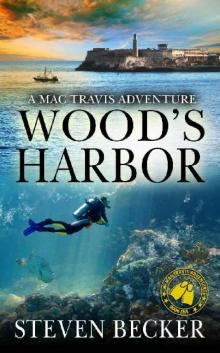 Wood's Harbor
Wood's Harbor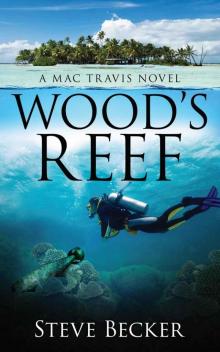 Wood's Reef
Wood's Reef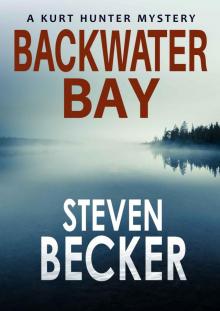 Backwater Bay
Backwater Bay